MAGICAL TOWNS IN TABASCO
Magical Towns of TABASCO
Tabasco is home to one “Magical Town”, Tapijulapa, a title given by the Mexican government to towns that showcase a unique cultural and historical heritage, as well as a strong tourism industry. These towns are considered important destinations for both national and international tourists, and are recognized for their natural beauty, traditional customs, and unique attractions.
TAPIJULAPA
Tapijulapa is a Magical Town located in the Sierra de Tabasco known as La Esmeralda de la Sierra, where pretty white houses with red tile roofs and tropical trees with large, shiny leaves decorate the narrow cobblestone streets. The fertile land of the place is irrigated by tributaries of the Grijalva River, which start golden sparkles in the sun and fill the atmosphere of the rivieras with the music of its constant murmur.
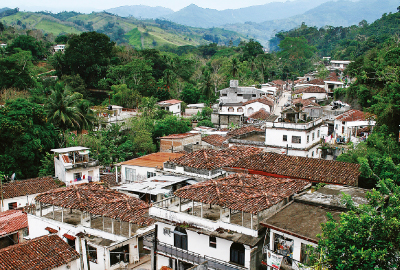
Tapijulapa is also known for its natural beauty, traditional culture, and rich history. The town is home to a diverse population of indigenous people, including the Tzotzil, Tzeltal, and Tojolabal groups.
One of the main attractions in Tapijulapa is the natural beauty of the surrounding area. The town is surrounded by lush forests and rugged mountains, making it a popular destination for hikers and nature enthusiasts. The area is also known for its diverse wildlife, including monkeys, parrots, and a variety of bird species. Visitors can also explore the many rivers and waterfalls that can be found in the region, including the Rio Tapijulapa, which is a popular spot for swimming and fishing.
Despite its small size, Tapijulapa offers a wide range of activities for visitors. From hiking and nature walks to exploring ancient ruins and experiencing local culture, there is something for everyone in this charming town. Additionally, the town offers a range of accommodations, including hotels, guesthouses, and camping sites, making it the perfect destination for a weekend getaway or a longer vacation.
Tourist Attractions in TAPIJULAPA
Templo de Santiago Apóstol
It is a beautiful and historic Catholic church that has been a significant part of the community for over 200 years. The temple is a stunning example of colonial architecture and a testament to the religious devotion of the people of Tapijulapa.
The church was built in the early 1800s by Spanish colonizers and was completed in 1820. It was built in the Baroque style, which was popular in Mexico during the colonial period. The temple is made of stone and features a large dome and twin towers. The facade of the church is adorned with intricate carvings, including a depiction of Saint James on horseback, which is a reference to his role as the patron saint of travelers.
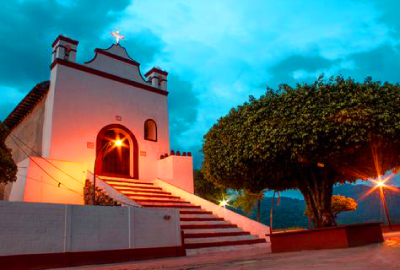
Inside the temple, the walls and ceiling are adorned with beautiful frescoes and paintings that depict scenes from the Bible, including the Last Supper and the Crucifixion. The altar is made of marble and is decorated with gold leaf. The church also features a large organ, which is still in use today.
The Templo de Santiago Apóstol is an important part of the community in Tapijulapa and is still used for religious services to this day. It is also a popular tourist attraction, and visitors can take guided tours of the church to learn more about its history and architecture.
The temple is also known for its annual religious festival, which is held in honor of Saint James. The festival is a colorful and lively celebration that includes processions, music, and traditional dances. The festival is attended by both locals and visitors from around the region and is a highlight of the year for many people in Tapijulapa.
The Templo de Santiago Apóstol is not only a beautiful and historic building, but it also holds great cultural and religious significance for the people of Tapijulapa. It stands as a symbol of the religious devotion and cultural heritage of the community and is an important part of the town’s history. The temple is well-preserved and is a must-see for anyone visiting Tabasco, Mexico.
Parque Estatal de la Sierra
It is a protected natural area that encompasses a diverse range of habitats and ecosystems. Spanning over 45,000 hectares, the park is home to a wide variety of plant and animal species, many of which are endemic to the region.
The park’s landscape is dominated by the Sierra de Tabasco mountain range, which rises to an elevation of over 1,200 meters above sea level. The range is characterized by steep slopes and deep canyons, and is covered in dense tropical forest that provides habitat for a wide variety of plant and animal species.
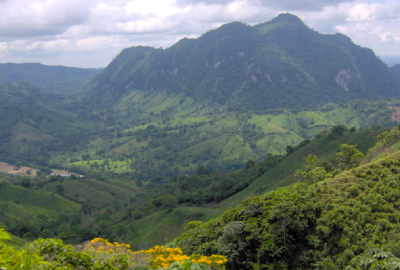
One of the park’s most notable features is its diverse array of plant life. The park’s forest is home to a wide variety of tree species, including mahogany, cedar, and pine. The park also contains a rich variety of orchids, bromeliads, and other epiphytes.
The park is home to a wide variety of animal species, many of which are considered to be endangered or threatened. These include the jaguar, ocelot, margay, and jaguarundi, as well as a variety of bird species such as the resplendent quetzal, the keel-billed toucan, and the crested guan.
Visitors to the park can explore its natural beauty through a variety of activities, such as hiking, bird-watching, and wildlife viewing. The park offers a number of well-marked trails, including one that leads to the summit of the Sierra de Tabasco, where visitors can enjoy panoramic views of the surrounding landscape. The park also offers guided tours, which provide visitors with the opportunity to learn about the park’s natural history and the conservation efforts being undertaken to protect its unique biodiversity.
In addition to its natural beauty and ecological importance, Parque Estatal Sierra de Tabasco also holds significant cultural and historical value. The park is home to a number of indigenous communities, who have lived in the area for centuries. These communities have a deep understanding of the park’s natural resources and have developed sustainable practices for their use.
Cascadas de Villa Luz
It is a natural wonder that is not to be missed. The cascading waterfalls, set amidst lush greenery and surrounded by towering cliffs, offer visitors a breathtakingly beautiful and serene setting.
The Cascadas de Villa Luz is a series of seven waterfalls that flow into a crystal-clear pool at the base of the cliffs. The waterfalls vary in size and shape, but all are equally stunning and mesmerizing. The largest of the waterfalls is over 50 feet tall and cascades down in a wide, thundering curtain of water. The smaller waterfalls are equally impressive, with some flowing in thin, delicate streams and others in more robust, powerful cascades.
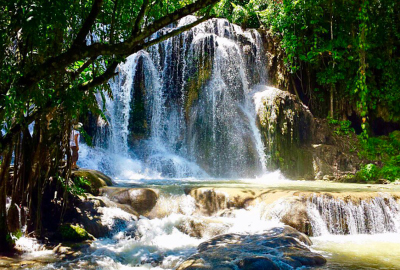
The water that flows through the cascades is sourced from a nearby river, and is clean and clear, making it perfect for swimming and snorkeling. Visitors can take a dip in the cool, refreshing waters and enjoy the natural beauty of the waterfalls from up close. The water is also home to a variety of fish and other aquatic life, making it a popular spot for fishing and bird watching.
One of the best ways to experience the Cascadas de Villa Luz is to take a hike along the trails that wind through the surrounding jungle. The trails offer stunning views of the waterfalls and the surrounding landscape, and are a great way to explore the natural beauty of the area. Along the way, visitors can spot a variety of wildlife, including monkeys, birds, and reptiles.
For those who are looking for a more leisurely experience, there are plenty of picnic spots and hammocks set up around the waterfalls, where visitors can relax and take in the natural beauty of the area. There are also vendors selling food and drinks, as well as souvenirs and other items.
The Cascadas de Villa Luz is a popular spot for adventure sports such as rappelling, ziplining, and rock climbing. Visitors can take part in these activities and experience the waterfalls from a unique perspective. There are also guided tours available, which offer an in-depth look at the history and culture of the area.
Cueva de las Sardinas
Located in Villa de Luz in Tapijulapa, is a unique and fascinating cave system that offers visitors a glimpse into the ancient history of the region. The cave is known for its intricate rock formations, underground rivers, and stunning natural beauty.
The cave system is believed to be over 5 million years old and is home to a variety of species of bats, fish, and other animals. The cave is also known for its intricate rock formations, including stalactites and stalagmites, which have formed over time as water has dripped through the cave’s ceiling and collected on the cave floor.
One of the most interesting features of Cueva de las Sardinas is the underground rivers that flow through the cave. These rivers are home to a variety of fish, including the cave sardine, which is found only in this cave system. Visitors can take a boat tour of the rivers to see the fish and other aquatic life that call the cave home.
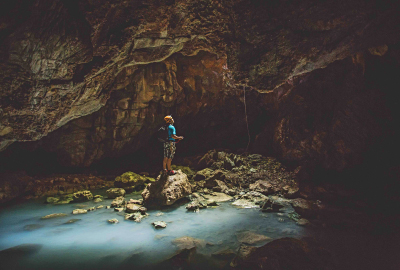
Cueva de las Sardinas is also known for its stunning natural beauty. The cave is filled with a variety of colors, including reds, yellows, and oranges, which are caused by the minerals in the rock. Visitors can also see a variety of rock formations, including columns, curtains, and flowstones, which are formed by the movement of water through the cave.
In addition to its natural beauty, Cueva de las Sardinas also holds significant cultural and historical importance. The cave has been used by the ancient Maya civilization for rituals and ceremonies, and it is believed that the cave was a sacred site for the Maya. Visitors can see evidence of the Maya’s presence in the cave, including carvings and paintings on the cave walls.
Cueva de las Sardinas is a popular tourist destination, and it is easy to see why. The cave offers visitors a unique and exciting experience, with its intricate rock formations, underground rivers, and stunning natural beauty. Visitors can also learn about the cultural and historical significance of the cave, making it a must-see destination for anyone visiting Tabasco, Mexico.
Visitors to Cueva de las Sardinas can take guided tours of the cave, which are led by experienced guides who can provide information about the cave’s geology, history, and wildlife. The tours last about an hour and a half and include a boat ride on the underground rivers. Visitors should be prepared for a moderate level of physical activity, as the tour includes some walking and climbing.
To visit Cueva de las Sardinas, visitors can fly into Villahermosa, which is the capital of Tabasco and is located just a short drive from Tapijulapa. From Villahermosa, visitors can take a bus or a taxi to Tapijulapa, and then take a short walk to the cave. Visitors should also be prepared for the warm and humid climate of Tabasco, and should wear comfortable clothing and shoes.
Reserva Ecológica de Kolem Jaá
The Reserva Ecológica de Kolem Jaá is a protected area that serves as a sanctuary for a wide variety of plant and animal species, as well as a source of ecological and cultural importance for the local communities. The reserve, which covers an area of approximately 2,500 hectares, is home to a wide range of habitats, including tropical rainforests, wetlands, and savannas, making it one of the most biodiverse regions in the country.
The reserve was established in 1990 by the Mexican government, with the goal of preserving the region’s rich biodiversity and cultural heritage. Since then, it has been managed by the National Commission for Protected Natural Areas (CONANP) and the local community, who work together to ensure the conservation and sustainable use of the reserve’s resources.
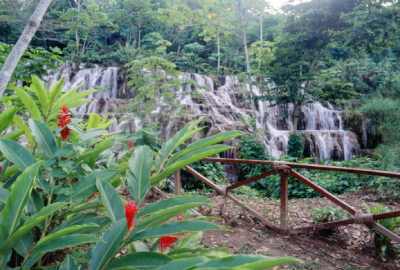
One of the most notable features of the reserve is its tropical rainforest ecosystem, which is home to a wide variety of plant and animal species. The forest is dominated by tall trees, such as mahogany and cedar, which provide habitat for a wide range of birds, mammals, and reptiles. Some of the species found in the reserve include jaguars, tapirs, monkeys, parrots, and toucans. The reserve also serves as a vital corridor for the migration of many species of birds between North and South America.
Another important habitat in the reserve is the wetland ecosystem, which is home to a wide variety of aquatic plants and animals. The wetlands are home to a wide range of fish, amphibians, and reptiles, as well as many species of birds, such as herons and egrets. The wetlands also serve as a vital breeding ground for many species of fish, such as tilapia and catfish, which are important for the local economy.
In addition to its ecological importance, the reserve also has significant cultural importance for the local communities. The reserve is home to several indigenous communities, who have lived in the region for centuries. These communities have a deep understanding and connection to the land, and have developed a unique culture and way of life that is closely tied to the natural resources of the reserve. The reserve also serves as a source of livelihood for many of the local communities, who rely on the reserve’s resources for their livelihoods, including fishing, farming, and ecotourism.
The reserve is also an important destination for ecotourism, with a wide range of activities available for visitors, including hiking, birdwatching, and fishing. Visitors can also learn about the reserve’s rich biodiversity and cultural heritage through guided tours and educational programs.
The Reserva Ecológica de Kolem Jaá is a vital area for the conservation of biodiversity and cultural heritage in Mexico. The reserve serves as a sanctuary for a wide variety of plant and animal species, and is an important source of livelihood for the local communities. It is a prime example of how conservation and sustainable use can go hand in hand, and it is of great significance for the preservation of natural resources for future generations.
Jardín Botánico de Dios
Jardín de Dios, or “Garden of God,” is a botanical garden located in the small town of Tapijulapa in the state of Tabasco, Mexico. The garden is home to a wide variety of plant species, many of which are native to the region and are not found anywhere else in the world.
The garden was first established in the early 1990s by a group of local residents who wanted to preserve the unique plant life of the region. Over the years, the garden has grown and expanded, and today it covers an area of over 100 acres.
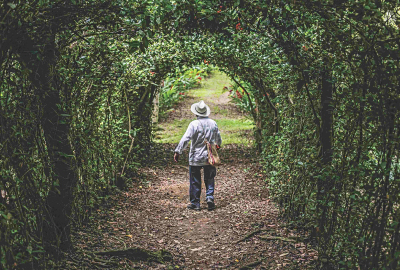
One of the main attractions of Jardín de Dios is its collection of tropical rainforest plants. The garden is home to a variety of tree species, including mahogany, cedar, and rosewood, as well as a wide variety of palm trees and other tropical plants.
Another unique feature of the garden is its collection of cacti and succulents. The garden is home to a variety of cacti and succulent species, many of which are native to the region. These plants are known for their ability to survive in harsh, dry conditions, and they are a testament to the resilience of the local flora.
The garden also features a collection of medicinal plants. Many of the plants in the garden have been used for centuries by the local indigenous people to treat a variety of ailments. Visitors can learn about the traditional uses of these plants and the ways in which they are still used today.
One of the most popular features of Jardín de Dios is its network of walking trails. Visitors can explore the garden on foot and enjoy the beautiful natural surroundings. The trails are well-maintained and are suitable for visitors of all ages and abilities.
The garden also features a visitor center where visitors can learn more about the plants and animals of the region. The visitor center includes a variety of interactive exhibits and displays that help visitors understand the unique ecology of the area.
Oxolotán and Amatlán Rivers
The Oxolotán and Amatlán Rivers are two important water sources located in the state of Tabasco, Mexico. These rivers play a crucial role in the ecology and economy of the region, providing a home for diverse aquatic life and serving as a vital source of water for agriculture and industry.
The Oxolotán River is the largest tributary of the Grijalva River, which is one of the main rivers in the state of Tabasco. The Oxolotán River originates in the mountains of Tabasco and flows through the lowlands, eventually emptying into the Grijalva River. The river is approximately 200 kilometers long and has a wide range of habitats, including rainforests, wetlands, and mangroves.
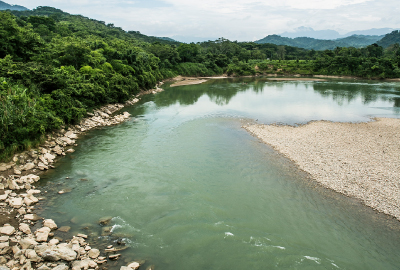
One of the most unique features of the Oxolotán River is its rich biodiversity. The river is home to a wide variety of fish, reptiles, mammals, and birds. Some of the species found in the river include crocodiles, manatees, monkeys, and jaguars. The river also provides a habitat for many migratory bird species, including herons, egrets, and kingfishers.
The Amatlán River is another important river located in the state of Tabasco. The river is approximately 100 kilometers long and is a tributary of the Usumacinta River. The Amatlán River is known for its clear water and beautiful scenery, making it a popular spot for fishing and recreational activities.
The Amatlán River also plays an important role in the economy of the region. The river is used for irrigation and hydroelectric power generation. The surrounding area is also home to a variety of crops, including corn, beans, and sugarcane. The river is also an important transportation route, with boats and barges used to transport goods and people.
Despite the importance of the Oxolotán and Amatlán Rivers, both rivers face a number of challenges. The increasing population and development in the region have led to increased pollution and habitat destruction. The rivers are also affected by changes in land use, such as deforestation and agricultural expansion.
To protect these important water sources, conservation efforts are being made in the region. The Mexican government has established protected areas along the rivers, such as the Oxolotán-La Venta Natural Protected Area and the Amatlán River Natural Reserve. These protected areas aim to preserve the biodiversity and natural habitats of the rivers, while also promoting sustainable development in the region.
More Tourist Attractions in TABASCO
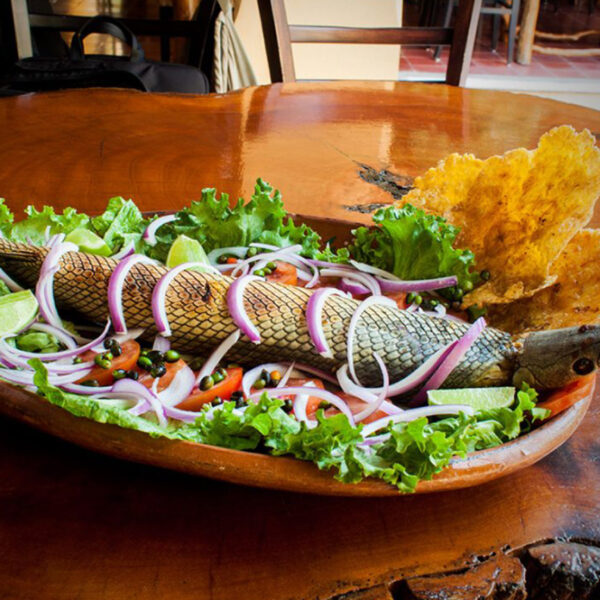
Gastronomy of Tabasco
The gastronomy of Tabasco is a reflection of the diverse cultures that have influenced the region throughout its history. From the indigenous Maya and Olmec people to the Spanish colonizers, the flavors of Tabasco have been shaped by a unique blend of ingredients and techniques.… Read More

Beaches in Tabasco
The state is home to a wide variety of beaches, each offering a unique experience for visitors. From secluded coves to bustling beaches, Tabasco has something to offer for everyone.… Read More
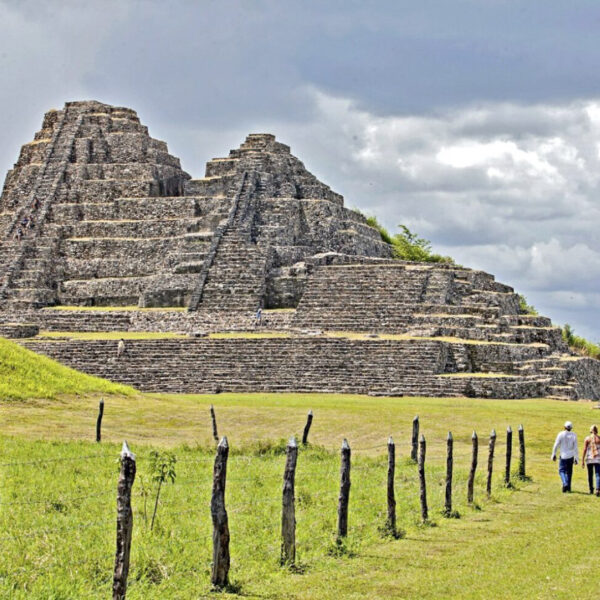
Archaeological Sites in Tabasco
Tabasco has been occupied by various indigenous groups for thousands of years, and as such, it is home to a variety of archaeological sites that offer a glimpse into the past. … Read More
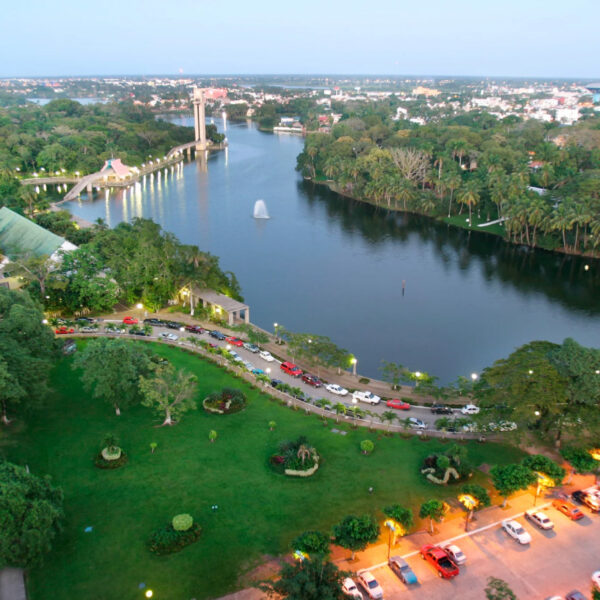
Villahermosa
Known for its lush tropical forests and diverse wildlife, Villahermosa is a popular destination for tourists looking to experience the unique culture and natural beauty of Mexico.… Read More
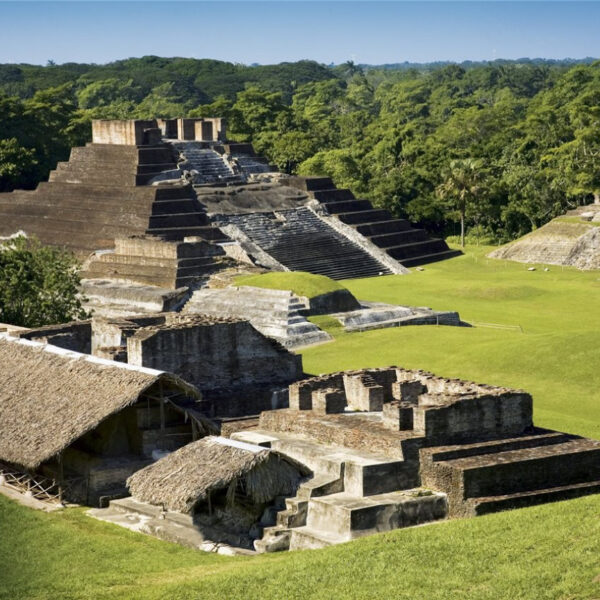
Comalcalco
A city located 56 kilometers northwest of Villahermosa, well-known for its Mayan archaeological site on its outskirts, which boasts impressive ruins from the 1st century AD, belonging to the classical era of the Mayan civilization.… Read More
Flights & Hotels in TABASCO
More Tourist Attractions in MEXICO

Archaeological Sites
The Archaeological Zones are the cultural past of every Mexican. You will be amazed at the ambient, nature and the environment that surrounds them. Climbing to the top or being around it will take us back in time to admire every detail. México is a country of culture and traditions, many of which we have inherited from the pre-Hispanic inhabitants of this vast territory, although it is true that there were more settlements in the central and southern part of the country, it is also possible to find some archaeological remains in the north.
… Read More

Beaches
On the Beaches of Mexico you can immerse yourself in the intense blue ocean of the Pacific bays, sunbathe on the shore of the warm and transparent waves of the Caribbean Sea in Quintana Roo or even rest on the beautiful coasts of the Gulf of Mexico. Mexican beaches hide wonderful secrets for the traveler. By visiting them, in addition to enjoying the excellent climate and water activities, you can discover splendid archaeological sites and interesting colonial cities without traveling long distances.… Read More

Capital Cities
Folklore, gastronomy, literary culture, art and exhibitions, is what you will find in the capitals of the states of Mexico. To the north, colonial Mexico, Puebla, Guadalajara, Guanajuato, the Sonoran desert and the California peninsula. To the east Veracruz and the gulf. To the west Acapulco, Oaxaca and Tuxtla Gutiérrez. And to the south the Riviera Maya and the pyramids of Chichén-Itzá, Tulúm and Cobá in Yucatán, Palenque in Chiapas, the cenotes, and the Central American jungles.… Read More

Traditions in Mexico
It is practically impossible to make a meticulous, and above all, accurate selection of the places to visit in Mexico. Each place that our country houses is unique and beautiful in its own way. Mexico, with its nearly 2 million km², has a large number of scenarios to offer, as well as endless activities to do. Do not lose your way and enter the places to visit in Mexico. In Mexico, apart from the beaches and its famous archaeological sites, there are many other really interesting sites and activities that you should know. In the surroundings of the main cities you will find places full of culture and tradition, where you can spend relaxing, interesting and fun vacations. On your trip through Mexico you cannot stop obtaining souvenirs, the crafts that are made here are of the highest quality and recognized worldwide. A shopping tour cannot be missed.… Read More

Gastronomy
The Gastronomy of Mexico has a great diversity of typical dishes, which is why it was recognized by UNESCO as Intangible Heritage of Humanity. The basic and representative ingredients of Mexican dishes are: corn, coriander, chili, beans, piloncillo, nopal and tomato. Mexican cuisine is also characterized by its sauces, which serve as an accompaniment to traditional dishes, prepared based on spices.… Read More

States Of Mexico
Mexico has an incredible diversity of landscapes, where the beauty of its beaches, internationally recognized, stands out. In its vast territory of coasts, there are beaches of unparalleled beauty, and colorful landscapes. A large network of first-class hotels and tourist services is available to visitors to these beaches. Mexico is also mystical places, dotted with archaeological testimonies inherited from its original inhabitants. Monuments made by the Mayas, Aztecs and Toltecs are located in magical landscapes, like lighthouses in an ocean of natural beauty. They offer visitors buildings that tell their history, and museums that collect their cultural heritage. And that keep alive ancestral traditions, in ceremonies and festivals, where you can enjoy cultural activities and entertainment.… Read More

Ecotourism and Adventure
Mexico is one of the best countries for Ecotourism as it has a great variety of flora and fauna, as well as a large number of refuges for extraordinary species. You can enjoy recreational activities of appreciation and knowledge of nature through contact with it, such as: stargazing, observation of natural attractions, wildlife and bird watching. Throughout México there are more than 176 protected natural areas, 5 of them considered by UNESCO as Natural Heritage of Humanity. Just for this and much more, we believe that Mexico is a Paradise for Ecotourism.… Read More

Magical Towns
A Magical Town is a place with symbols and legends, towns with history that in many cases have been the scene of transcendent events for our country, they are places that show the national identity in each of its corners, with a magic that emanates from its attractions ; visiting them is an opportunity to discover the charm of Mexico. The Magical Towns Program contributes to revalue a set of populations in the country that have always been in the collective imagination of the nation and that represent fresh and varied alternatives for national and foreign visitors. A town that through time and in the face of modernity, has conserved, valued and defended its historical, cultural and natural heritage; and manifests it in various expressions through its tangible and intangible heritage. A Magical Town is a town that has unique, symbolic attributes, authentic stories, transcendent events, everyday life, which means a great opportunity for tourist use, taking into account the motivations and needs of travelers.… Read More

